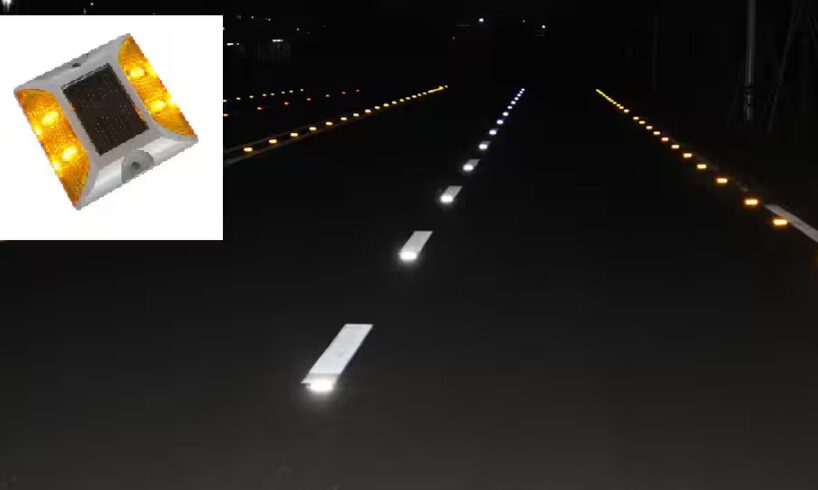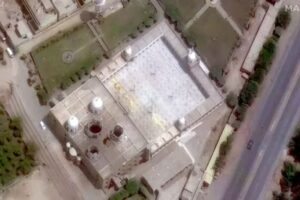
Road Studs Science Explained: Ever seen yellow square-shaped objects embedded on the sides of the roads or highways you often drive through? You may have noticed that these shines and emit ligh during night time while remain off during the day. Did you think that these are connected to electricity via an underground cable? If yes, you’re wrong. These are neither connected internally or externally to any power source and are not linked even together. The road studs are also called Lane Markers, Road Reflectors, and Traffic Studs.
You’ve probably noticed those small, glowing dots along the road — quietly marking lanes and edges, even in complete darkness. They flicker faintly when your headlights hit them, creating a clear, glowing path ahead. But have you ever wondered how these road studs or cat’s eyes manage to shine without any electricity?
It feels almost magical — little lights that never seem to run out of power. The truth, however, is a brilliant combination of physics, materials science, and clever engineering.
Add Zee News as a Preferred Source
The Secret: Retroreflectivity
Most traditional road studs don’t use any external power at all. Instead, they rely on a property called retroreflectivity.
Inside each stud are tiny glass beads or reflective lenses designed to bounce light back toward its source — in this case, your vehicle’s headlights. When the light from your car hits these lenses, it is reflected straight back at the driver, making the studs appear to glow.
Unlike mirrors that scatter light in different directions, these specially curved lenses return light in the exact direction it came from, ensuring maximum visibility from the driver’s seat.
Solar-Powered Variants
While traditional reflective studs depend purely on optics, modern highways often use solar-powered road studs for enhanced visibility. These are fitted with small solar panels on top and LED lights inside.
During the day, the solar panel absorbs sunlight and stores energy in tiny rechargeable batteries. At night, the stored energy powers the LEDs, making the studs emit a steady or flashing light.
These solar studs are especially useful in foggy or low-visibility conditions, providing clear lane guidance and increasing safety without depending on the electrical grid.
Watch Video To Understand–
How road lights work without electricity pic.twitter.com/Rxd9Mf2Hz4
— CLEAN CAR CLUB (@TheCleanCarClub) October 7, 2025
Why They Matter
Road studs serve a purpose far greater than just aesthetics — they are lifesavers. By improving lane visibility, especially during night drives or bad weather, they help reduce accidents significantly.
They are often used:
* Along highway medians and lane dividers
* On sharp turns or hilly roads
* Near accident-prone zones
* Around airport runways and tunnels
Each color also carries meaning — for example, white marks lanes, red denotes the road edge, and yellow often separates opposing traffic.
Simple Idea
The brilliance of road studs lies in their simplicity. Whether powered by sunlight or physics, they quietly guide millions of drivers every night without consuming a single unit of electricity from the grid.
So, the next time you’re driving and see those glowing dots leading your way through the dark, remember — it’s not magic. It’s science, cleverly embedded beneath your wheels, lighting your path one reflection at a time.





